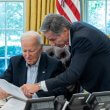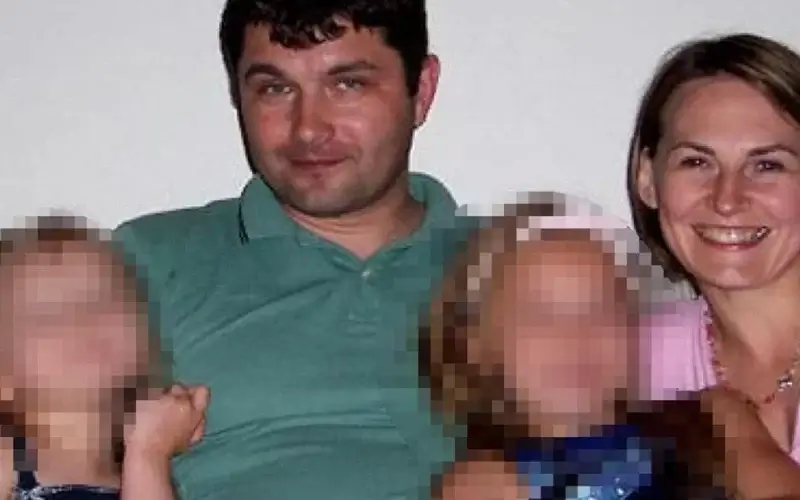In 2010, the FBI arrested 10 Russian spies in America, in what they said was a reminder of how, even in the post-Cold War era, America faced espionage threats from foreign governments. Now, with diplomatic ties between the United States and Russia badly frayed as a result of the Ukraine-Russia war, the threat of increased espionage and hostilities between nations looms again.
On June 28 of that same year, the FBI announced it had discovered a total of 11 agents of the Russian Foreign Intelligence Service, known by the Russian acronym SVR. The FBI counterintelligence surveillance operation to track them, which the bureau called “Ghost Stories,” lasted over a decade.
The spies’ mission, according to messages from Moscow headquarters decoded by the FBI: “You were sent to USA for long-term service trip... your main mission [is] to search and develop ties in policy making circles in U.S. and send intels [intelligence reports] to [Moscow Center].”
They embedded themselves in classic American lifestyles across the country, spanning from the northeast in Boston, New York, and the northern Virginia suburbs of DC, to time spent on the West Coast in Seattle.
They worked in a variety of fields, including computer support, finance, consulting, real estate, travel agency, and journalism. Eight of them formed four families with children. A total of three lived in the DC area, six in and around NYC, and two in Boston. The DC-based spies occasionally made trips to New York to retrieve cash and pass information.
To transfer reports to Russian government officials in the U.S., the spies used classic spy tradecraft such as brush passes, buried information, ciphers, and steganography, which is the practice of concealing messages inside of non-secret, easily accessible media.
Most of the spies did not enter the U.S. directly from Russia, instead living in Britain, Canada, and Peru before moving into America. All but three went by aliases. Some of the names used were those of deceased Canadian infants. Half of the spies established identities in Canada in the 1990s before moving to the U.S.
In response to FOIA requests, the FBI in 2011 released images of documents that the spies used to substantiate their American aliases, from Costco membership cards to fraudulent birth certificates showing state-side hometowns.
Benefitting from the diverse, immigrant-based American demographics, the spies posed as a variety of ethnicities: Canadian-Americans, Irish-Americans, and Italian-Americans, with one even passing as Latino. By July 8, 2010 the FBI announced all 10 spies had admitted their Russian nationalities and true names.
The captured spies pled guilty to one or both charges of “conspiracy to act as an agent of a foreign government without notifying the U.S. Attorney General and conspiracy to commit money laundering.” The FBI claimed the spies “never got their hands on any classified documents,” which is why they were accused of conspiracy charges rather than more serious espionage charges.
Russian President Vladimir Putin was quoted in response to the convictions saying, “I expect that the positive tendency in relations over the last years is not harmed. We very much hope that people who value good relations understand this."
The Obama administration did not make public the diplomatic issue of the spies, with Press Secretary Robert Gibbs saying it was a “law enforcement matter.”
Once the spies pled guilty in federal court, the U.S. arranged a prisoner swap to deport the agents to Russia. After the swap took place in Vienna, the spies were received in Russia with a hero’s welcome. Russia released four prisoners to the U.S., including double-agent Sergei Skripal, who made headlines more recently when he and his daughter narrowly survived a nerve agent poisoning in 2018 after settling in Britain.
Between the four married couples among the apprehended spies, there were a total of six minor children. The spies, retaining their parental rights, were given a choice to take their children with them to Russia or to place them with friends in America. Some news outlets reported that at least one of the children had been groomed to become a second generation spy, and while this was never publicly confirmed by the FBI, the boy in question found he was not welcome in his native Canada after going to Russia with his parents after the trial. After nine years of paperwork and court cases, Canada restored the son’s citizenship.
Some of the children were placed with close friends in America. As for the Russian spies themselves, their stories varied.
Vladimir and Lydia Guryev posed as all-American suburban couple “Richard and Cynthia Murphy.” They moved from Canada with their two young boys in the 90s and bought a home in the New Jersey suburbs of NYC. Their story, and the interviews of their shocked neighbors after FBI agents arrested them at their home, became an inspiration for the FX show “The Americans” about Cold War spies who marry and have a family as part of their deep cover.
Lydia Guryev had a working relationship with Clinton-ally Alan Patricof as a result of her career at Morea Financial Services, the New York accounting firm where she handled Patricof’s finances.
SVR spy Anna Chapman, who used her real name after she divorced her British husband and moved to America, was possibly the most successful. The media described her as an auburn-haired bombshell with her own real estate business, and she reportedly nearly seduced an Obama administration cabinet member. Young, attractive, and single, she became the most famous of the outed spies and went on to become a TV show host and media personality in Russia.
Today, she likes spreading patriotic pro-Russian messaging on her social media platforms as the war in Ukraine rages on.
Peruvian journalist Vicky Pelaez (her real name), met and married one Mikhail Vasenkov, a swarthy Slav passing for a Uruguayan by the name of “Juan Lazaro” while in Peru. They moved to New York City, where they had a son together as they passed intel to the Russian government. At the time of Pelaez’ arrest, she was writing for a Spanish language NYC daily, promoting leftist and communist ideologies and praising the likes of Fidel Castro in her work.
Today, she writes for party-approved Moscow News from her home in Peru, where she and Vasenkov relocated after their initial prisoner swap to Russia.
It’s unclear why the FBI moved in when they did. Some say it was because Chapman got too close to the Obama cabinet member. Some say the FBI had an informant inside the SVR whose cover was blown and fled Russia a few days before the arrests. Maybe it was because the surveillance of the slow-burn espionage effort had yielded all the intelligence the FBI expected, and the U.S. was ready swap for the four Russian prisoners.
One spy, who operated under the alias Christopher Metsos, escaped the U.S. when his accomplices were apprehended but was arrested in Cyprus on an INTERPOL warrant. He is described as the ‘paymaster’ of the operation. Cyprus planned to extradite Metsos to the U.S., but he was released on bail and disappeared within a day. Since the FBI only learned the spies’ real names in interviews after they were arrested, Metsos’ real identity remains unknown. To this day, he remains at large, and the FBI is offering a $50,000 reward for information leading to his capture.










